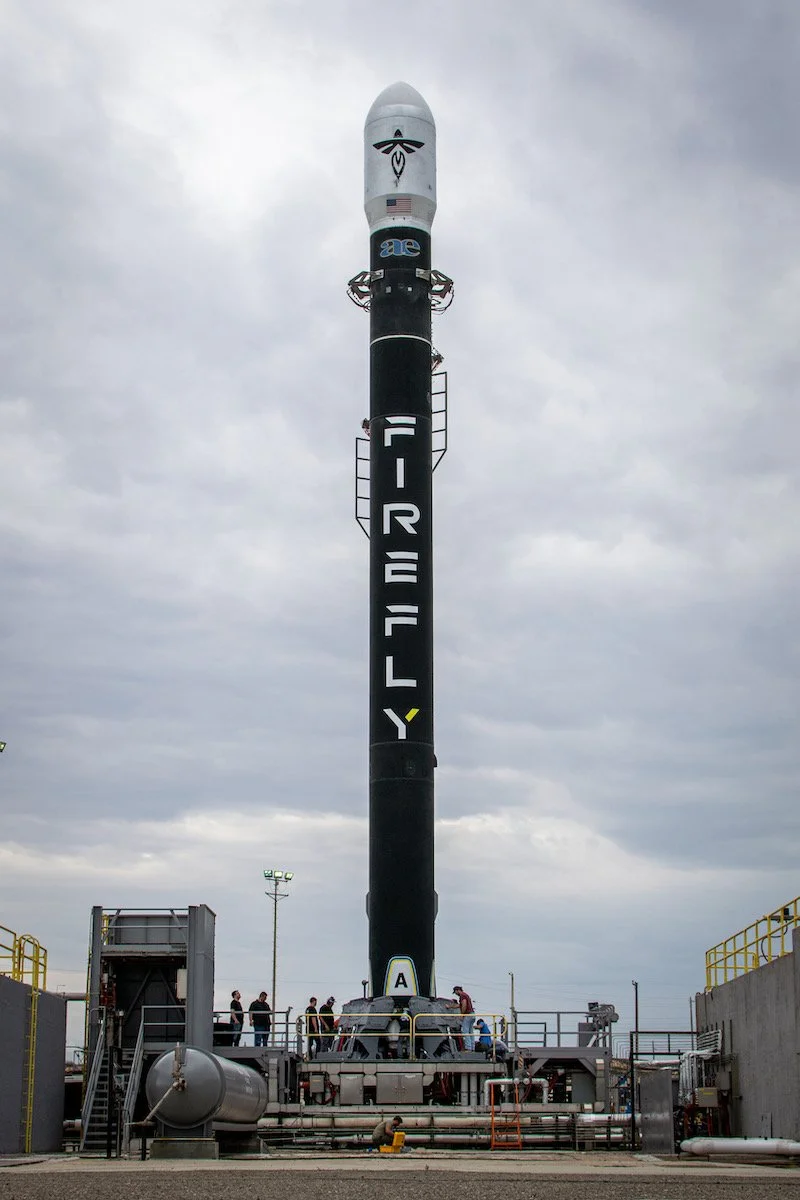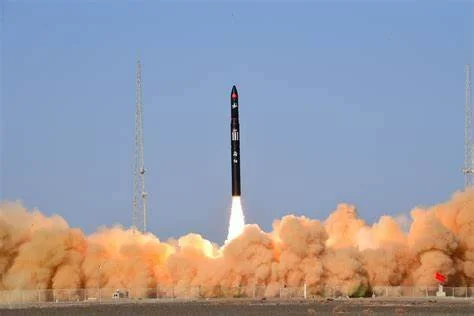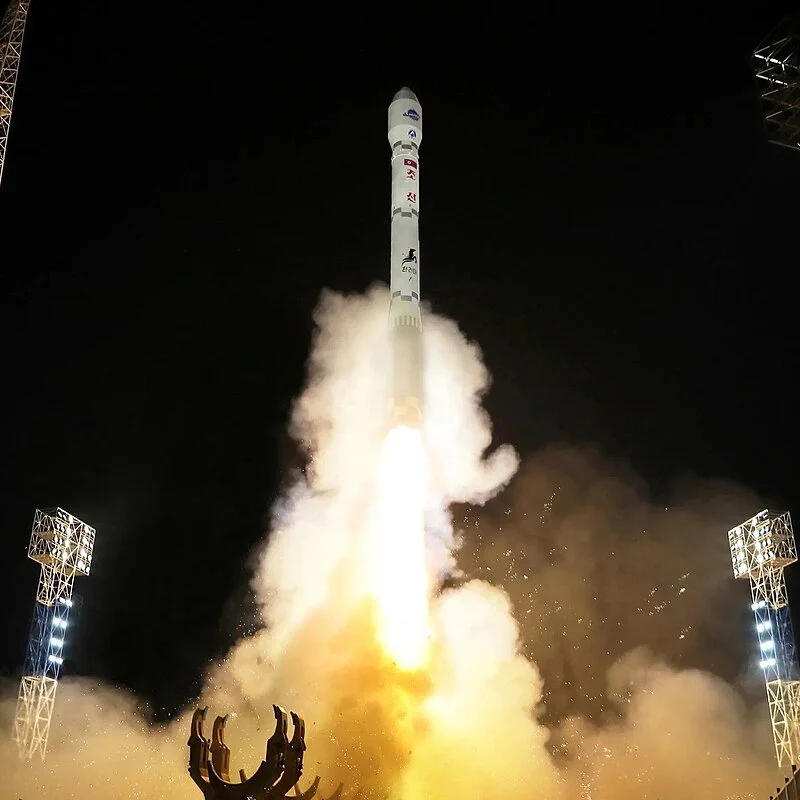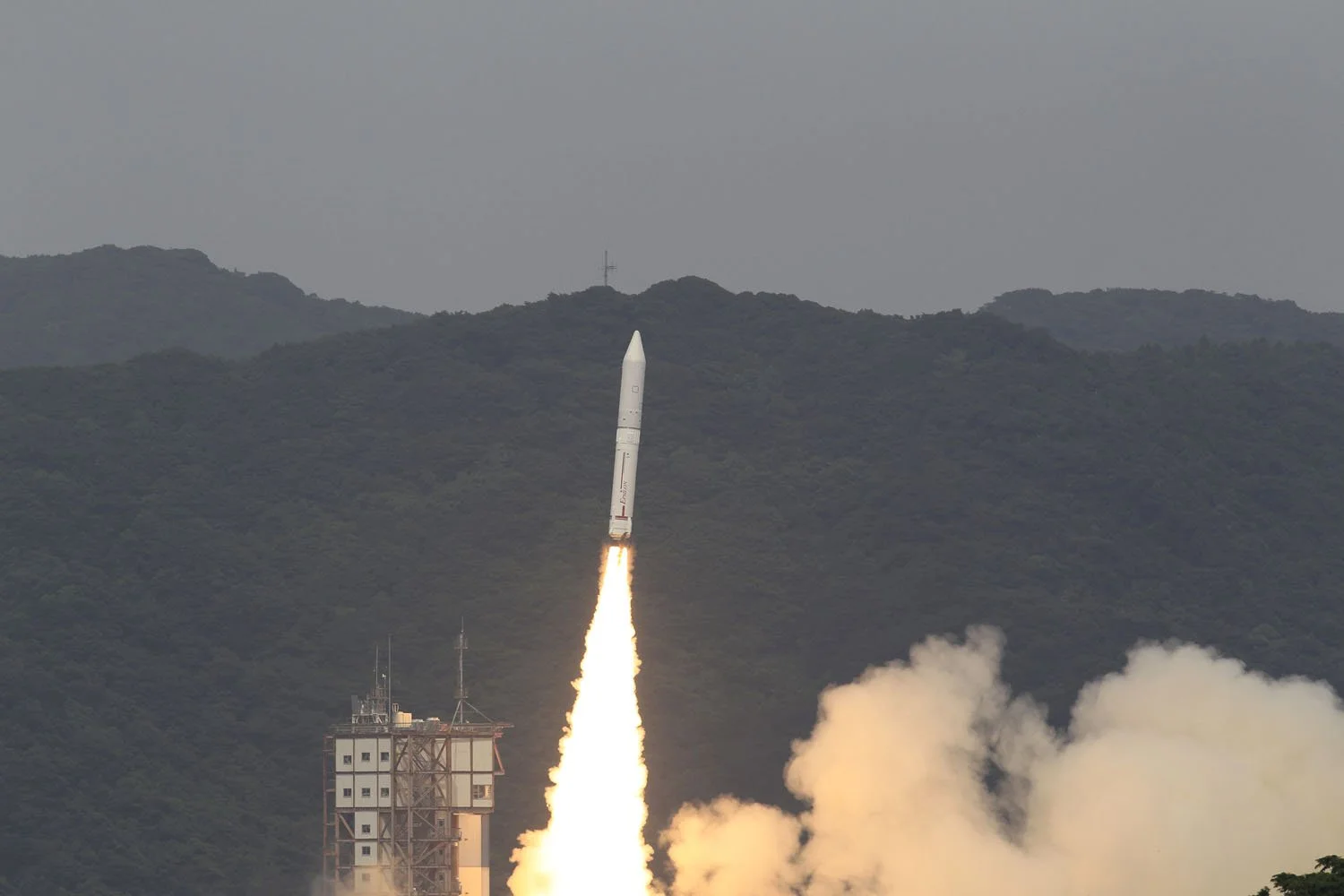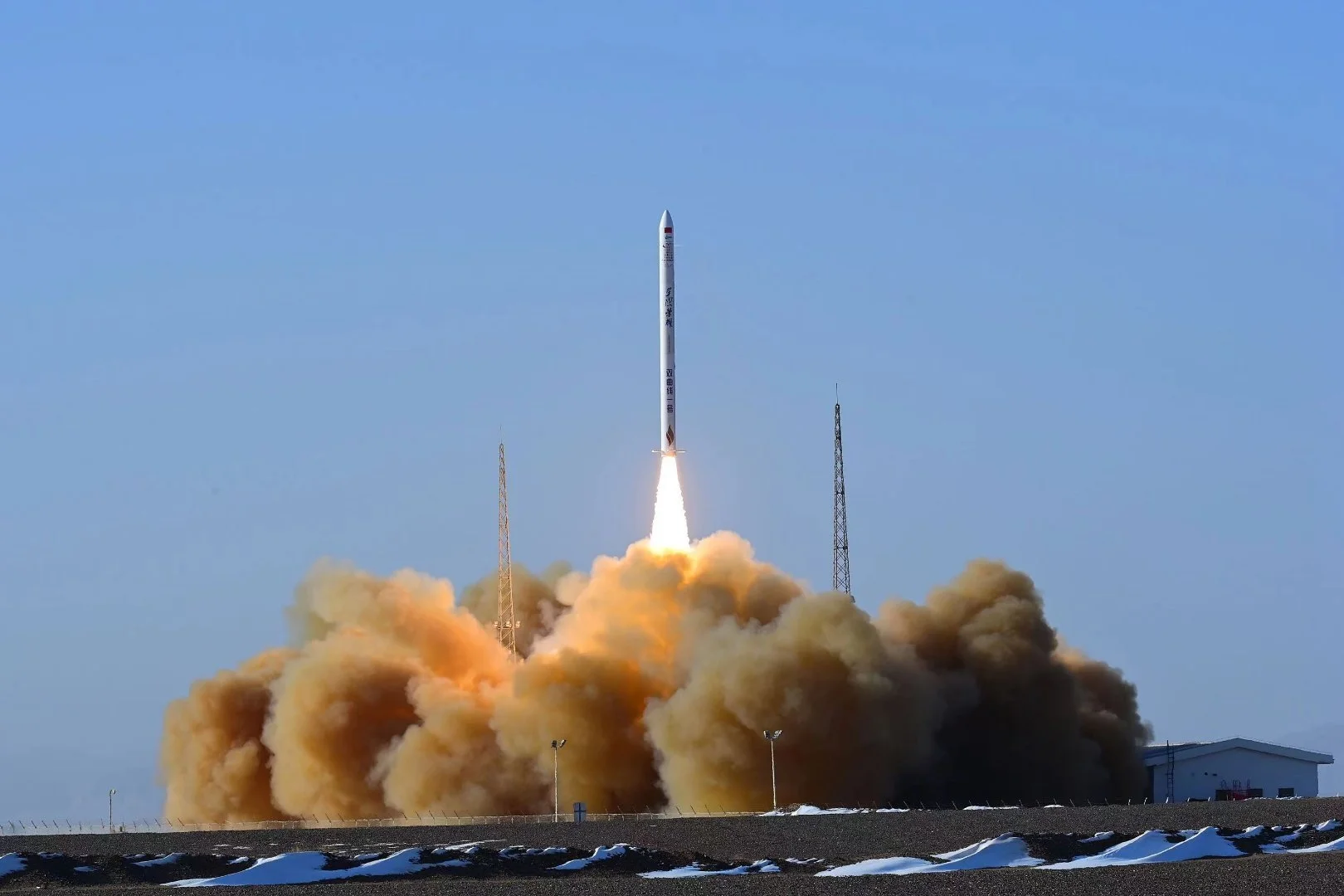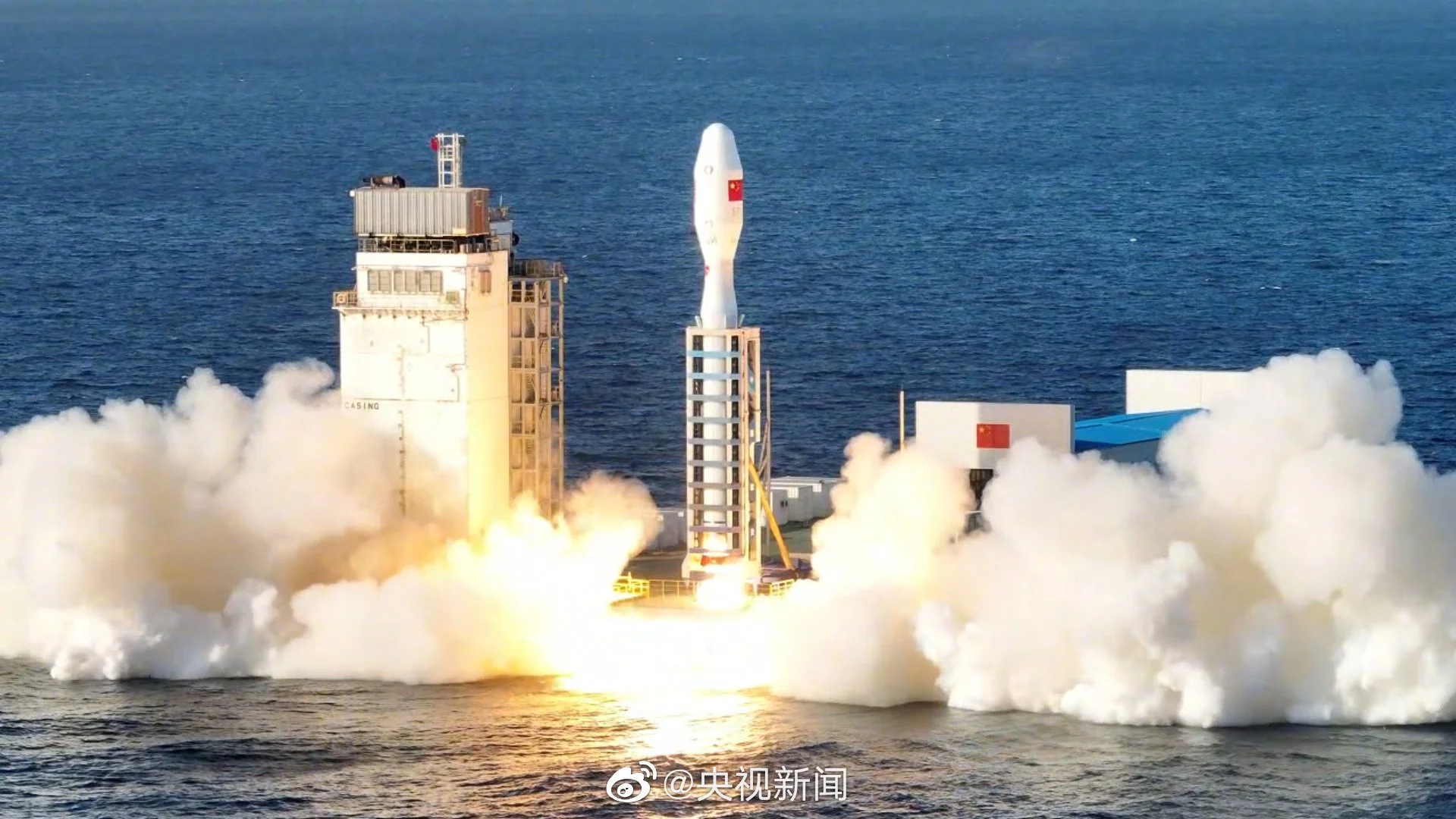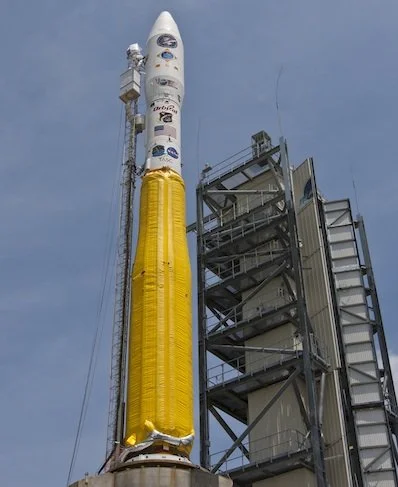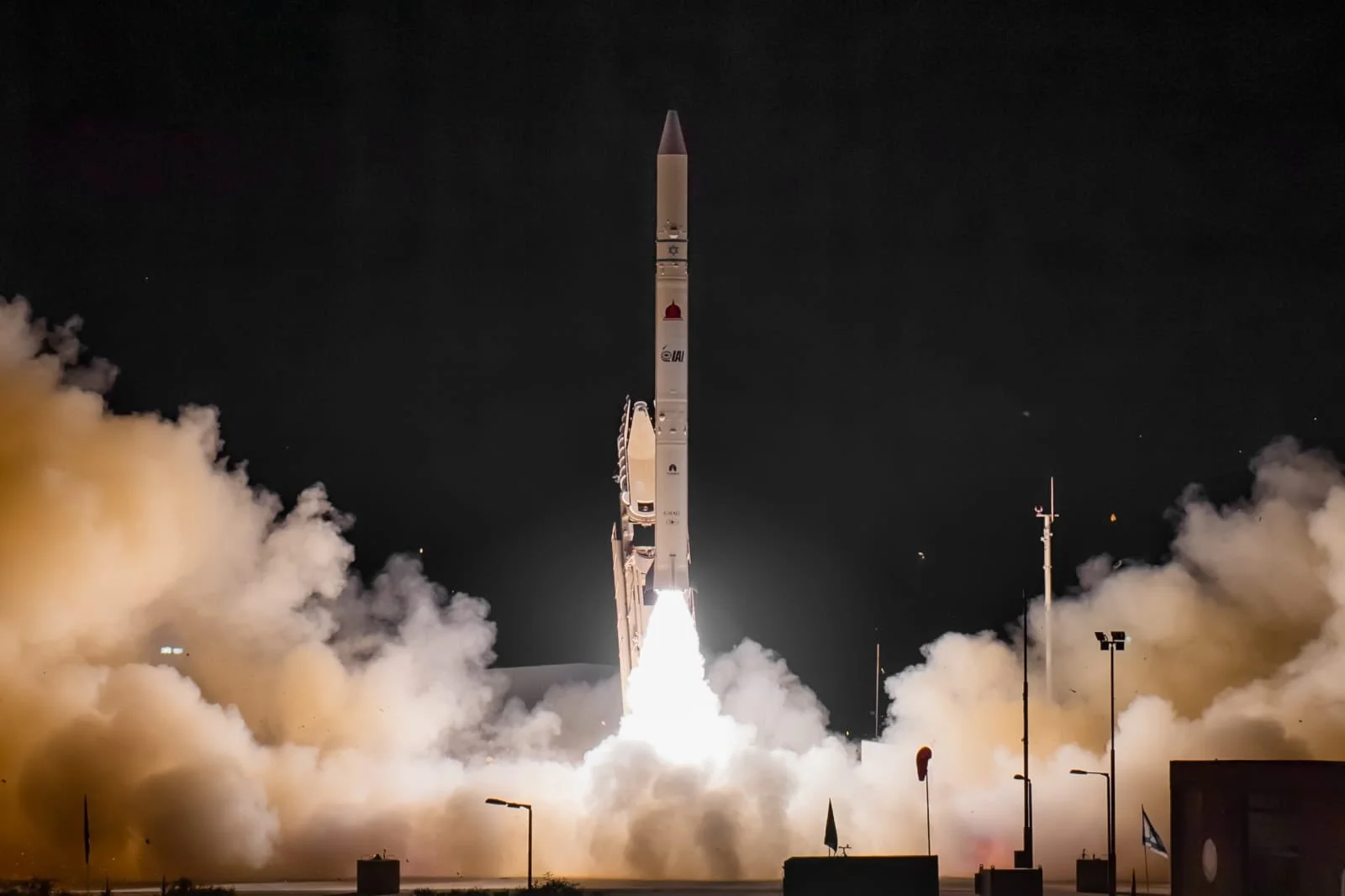Small-lift launch vehicles
The Small-Lift Launch Vehicle Index is your essential resource for rockets designed to carry payloads up to 2,000 kilograms to low Earth orbit. These vehicles are vital for launching small satellites, CubeSats, and constellations for commercial, scientific, and defence purposes. As demand for flexible, low-cost access to space increases, small-lift rockets are enabling quicker launch cycles and more adaptability. This index highlights key specifications and capabilities of leading launchers, showing how these compact systems are shaping the future of orbital delivery and satellite deployment.
Alpha
Alpha Firefly Aerospace USA
The Alpha is a small-lift, two-stage launch vehicle developed by Firefly Aerospace for commercial and government satellite launches. The rocket stands 29.5 m (97 ft) tall, has a diameter of 1.8 m (5.9 ft), and a launch mass of ~54,000 kg (119,000 lb). It is powered by four Reaver 1 engines on the first stage and a single Lightning 1 engine on the second stage, both using RP-1/LOX propellants.
LEO Payload Capacity: 1,375 kg (3,030 lb)
SSO Payload Capacity: 1,000 kg (2,200 lb)
Alpha launches from Vandenberg Space Force Base (SLC-2W).
Ceres-1
Ceres-1 Galactic Energy CHINA
The Ceres-1 is a small-lift, four-stage launch vehicle designed for commercial satellite launches. It stands 19 m (62 ft) tall, has a diameter of 1.4 m (4.6 ft), and a launch mass of ~33,000 kg (72,750 lb). The rocket consists of three solid-propellant stages and a liquid-fueled fourth stage for precise orbital insertion.
LEO (500 km altitude): 400 kg (880 lb)
SSO (500 km altitude): 350 kg (770 lb)
Ceres-1 operates from Jiuquan Satellite Launch Centre.
Chollima-1
Chollima-1 National Aerospace Technology Administration(NATA) NORTH KOREA
The Chollima-1 is a three-stage satellite launch vehicle developed by North Korea for deploying payloads into low Earth orbit (LEO). Estimates suggest it stands ~30 m (98 ft) tall, has a diameter of ~2.5 m (8.2 ft), and a launch mass exceeding 50,000 kg (110,000 lb). It features a liquid-fueled first and second stage, with a third stage likely using solid propulsion.
LEO: 200–300 kg (~440–660 lb)
The Chollima-1 is launched from Sohae Satellite Launching Station
Epsilon
Epsilon Japan Aerospace Exploration Agency (JAXA) JAPAN
The Epsilon is a solid-fueled, small-lift launch vehicle developed by JAXA for scientific and small satellite missions. The rocket stands 26.0 m (85 ft) tall, has a diameter of 2.5 m (8.2 ft), and a launch mass of ~95,000 kg (209,400 lb). It features three solid-propellant stages with an optional liquid-fueled fourth stage for precise orbital insertion.
LEO Payload Capacity: 1,500 kg (3,300 lb)
SSO Payload Capacity: 590 kg (1,300 lb)
Epsilon launches from the Uchinoura Space Centre. It has since been used for small satellite and scientific missions, with ongoing development of an upgraded Epsilon S variant for future operations.
Electron
Electron Rocket Lab NEW ZEALAND
The Electron is a small-lift, two-stage launch vehicle developed by Rocket Lab for dedicated small satellite launches. The rocket stands 18 m (59 ft) tall, has a diameter of 1.2 m (3.9 ft), and a launch mass of ~13,000 kg (28,660 lb). It is powered by nine Rutherford engines on the first stage and a single vacuum-optimized Rutherford engine on the second stage, both using RP-1/LOX propellants.
LEO Payload Capacity: 300 kg (660 lb)
SSO Payload Capacity: 200 kg (440 lb)
Electron launches from Launch Complex 1 (New Zealand) and Launch Complex 2 (Virginia, USA).
ERis
Eris Gilmour Australia
Eris is a three-stage small satellite launch vehicle developed by Gilmour Space Technologies. Eris has a height of 25 meters and a diameter of 2 meters. The launch mass is around 33,000 kg.
LEO Payload Capacity: 315 kg
SSO Payload Capacity: 215 kg
Eris launches from Bowden, Queensland Australia.
Hyperbola-1
Hyperbola-1 i-Space CHINA
The Hyperbola-1 is a small-lift, four-stage launch vehicle developed by i-Space, a Chinese private aerospace company, for commercial satellite launches. It stands 20.8 m (68 ft) tall, has a diameter of 1.4 m (4.6 ft), and a launch mass of ~31,000 kg (68,340 lb). The rocket consists of three solid-propellant stages and a liquid-fueled fourth stage for precise orbital maneuvers.
LEO (500 km altitude): 300 kg (660 lb)
SSO (500 km altitude): 260 kg (573 lb)
Hyperbola-1 launches from Jiuquan Satellite Launch Center.
Jielong 3
Jielong 3 CALT-China Rocket CHINA
Jielong 3 meaning "agile dragon", also known as Smart Dragon 3, SD-3. The rocket is 31 meters tall, 2.65 meters in diameter and weighs 145 metric tons. It is a solid fuel, 4 stage orbital rocket. The fairing diameter is 3.35 m. It uses the same rocket motors as the Zhongke-1 (ZK-1, Lijian-1) rocket.
LEO Payload Capacity: UNK
SSO Payload Capacity: 1,600 kg (3,500 lb)
Jielong 3 launches from Special converted barges Tai Rui, Bo Run Jiu Zhou and Dong Fang Hang Tian Gang
Kuaizhou-1
Kuaizhou-1 CASIC China
Kuaizhou-1 (KZ-1) is a solid fuelled, four-stage rocket. It stands at 19.4 m tall, is 1.4 m in diameter. The kuaizhou-1 is designed for rapid-response launches. The rocket series is based on CASIC's Anti-satellite weapon (ASAT) and BMD mid-course interceptor rockets, in particular the DF-21 Intermediate-range ballistic missile (IRBM).
Leo: UNKNOWN
SSO: 430 kg (950 lb)
Kuaizhou-1 launches out of the Jiuquan Satellite Launch Center
Minotaur I
Minotaur I Northrop Grumman USA
The Minotaur I is a solid fuel 4 stage (possible 5) rocket launch system derived from the Minuteman II missile. The Minotaur I is 69 feet tall and 5 feet wide with a mass of 36,200 kilograms (79,800 lb). There have been thirteen launches of the Minotaur I, all successful.
LEO Payload Capacity: 580 kgs (1,280 lb)
SSO Payload Capacity: 331 kgs (730 lb)
Minotaur I is launched from Vandenberg SLC-8 MARS LP-0B
Shavit 2
Shavit 2 Israel Aerospace Industries Israel
Shavit 2 is a small lift launch vehicle produced by Israel. The first of the Shavit vehicles were a small, 3-stage, solid-propellant booster based on the 2-stage Jericho-II ballistic missile, with an optional liquid-fuel fourth stage.
LEO Payload Capacity: 350–800 kg
Shavit rockets are launched from Palmachim Airbase by the Israel Space Agency into highly retrograde orbits over the Mediterranean Sea to prevent debris coming down in populated areas.
Simorgh
Simorgh Iran
The Simorgh or Safir-2 is an Iranian expendable launch vehicle. Simorgh is a two-stage liquid-fuelled rocket developed from the Safir rocket. Height 25.9 m (85 ft), Diameter 2.4 m (7 ft 10 in) first stage, 1.5 m (4 ft 11 in) second stage, Mass 87 t (192,000 lb) Stages 2 (optional 3rd stage)
LEO Payload Capacity: 800 kg (1,800 lb) to 200 km
LEO Payload Capacity: 250 kg (550 lb) 500 km
LEO Payload Capacity: 400 kg (880 lb) 500 km (with Saman-1 third stage)
Simorgh rockets are launched from the Imam Khomeini Space Launch Terminal, Iran.
Tianlong-2
Tianlong-2 Space Pioneer CHINA
The Tianlong-2 is a medium-lift, two-stage launch vehicle developed by Space Pioneer, a Chinese private aerospace company. It utilizies kerosene and liquid oxygen (RP-1/LOX) propellants. The rocket stands 32.8 m (107.6 ft) tall, has a diameter of 3.35 m (11 ft), and a launch mass of ~150,000 kg (330,700 lb). It is powered by three Tianhuo-12 engines on the first stage and a single vacuum-optimized Tianhuo-12 engine on the second stage.
LEO Payload Capacity: 2,000 kg (4,400 lb)
SSO Payload Capacity: 1,500 kg (3,300 lb)
Tianlong-2 launches from Jiuquan Satellite Launch Centre.
